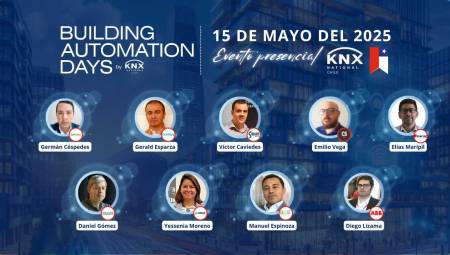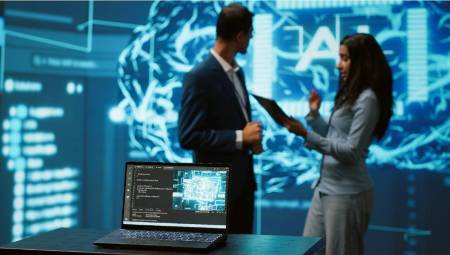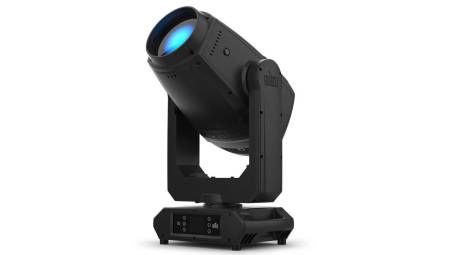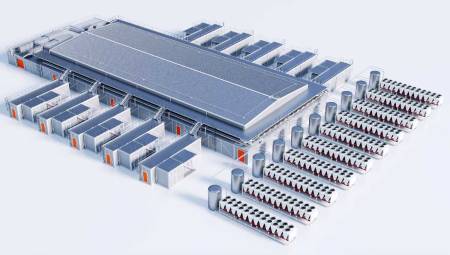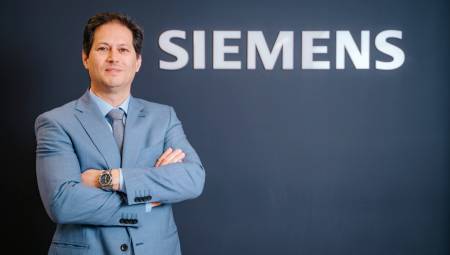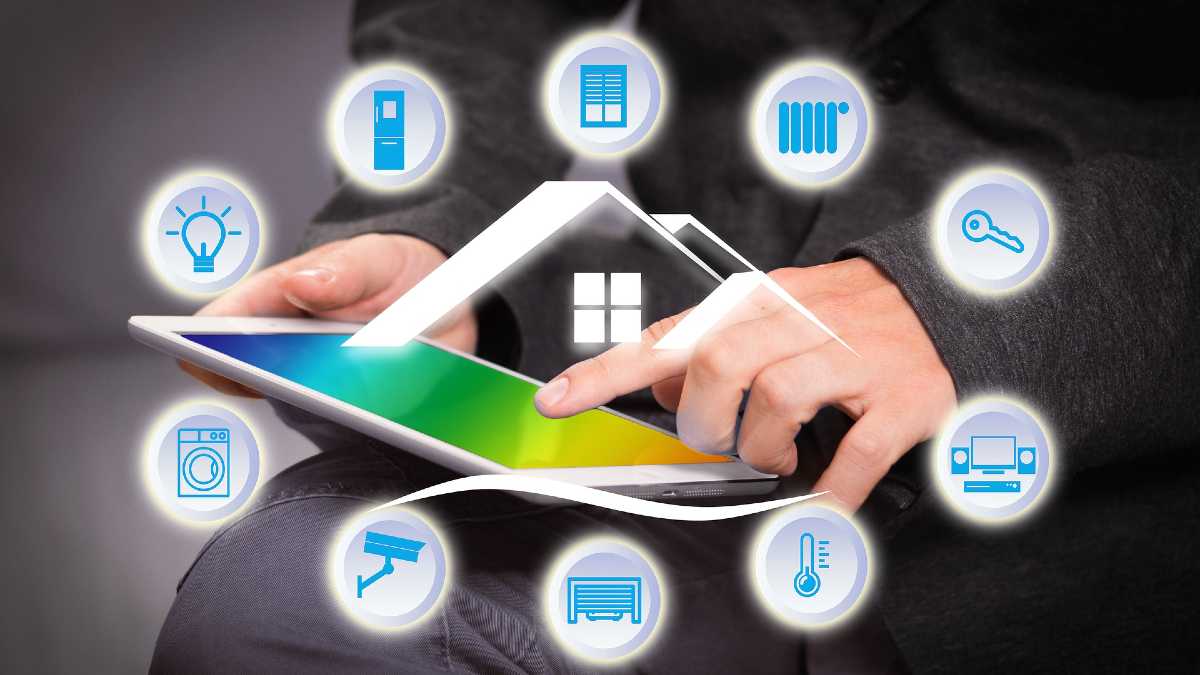 The trend in home automation systems is for the end user to be able to configure the solution according to their preferences.
The trend in home automation systems is for the end user to be able to configure the solution according to their preferences.
Richard Santa
2020 was an unprecedented year for the recent history of humanity. The lives that the pandemic extinguished are counted in millions and the confinements as a measure to face it affected the economy, paralyzing for months many non-essential sectors, among which the audiovisual industry was not exempt.
Despite the difficult situation, there was a sector of the audiovisual industry that, after the paralysis of the second quarter of the year, had an important rebound for the second semester: residential integration. Herbert Bansbach, of the company Control4, explained this situation as a rebound effect after the initial paralysis and because people had to spend all their time in their homes, so they decided to integrate and / or renew technology that would allow them to achieve greater comfort and improve entertainment options.
He stressed that "The way the world works changed, it became a remote world, and home automation goes hand in hand with it. The service is now remote, you go to school virtually, people work from home. And control and automation solutions simplify life. That has been an effect of Covid19, which has allowed people and their families to have had to jump to technology in a radical way, some by force."
Lutron's Vice President of Sales for Latin America, Roberto Mallens, commented that "In the last year the modality has been the home office, which has generated a lot of demand in the residential market, in the area of home automation. Customers are looking for new technologies that work in our favor, for our comfort. And not only in the home office, but also in the entertainment, in the living room, the TV area, the patio. And this brings us more compatibility with other fundamental systems for the development of any project. The pandemic has been very beneficial for the residential sector, because people are investing more in their homes."
For his part, Ariel Gutiérrez, president of Polaris Controls, Savant's representative for the Latin American market, stressed that another effect of the impact of the pandemic on the industry was that many companies dedicated to the commercial sector included the residential sector in their portfolio. Before, it was the companies of the residential sector that migrated to corporate or commercial projects, because typically the residential project takes more time, the transaction is more complex because there are too many personal elements involved in the selection of a team.
"In 2020 the residential sector returned strong, the theaters at home, everything related to entertainment in the house, in the courtyards, outdoors, was very strong. It was a good year from a business point of view for the residential sector," he said.
In the same sense, the commercial director of Crestron Latam, David Román, said that although the company has a wide variety of segments, in 2020 it was the residential market. "During the pandemic, the other sectors collapsed and the residential sector grew. The user had to stay at home, and the money he spent on vacations was invested in the comfort of his home. We have had many upgrade issues, new houses, incorporation of technologies. Crestron responded to this reality and developed many home office technologies."
Double-digit growth
The main studies on the home automation and residential automation market confirm the positive outlook of this sector, with growth forecasts until 2025 at double digits. Let's look at some examples:
In the Smart Home Automation Market by Application report, prepared by Market Research, the global smart home automation market is estimated to exceed USD 94 billion by 2025, growing at a CAGR of more than 12% during the forecast period 2020-2025.
"The global smart home automation market has strong competition between new emerging players and well-established ones. These market players aim to gain a competitive advantage over the other players by participating in partnerships, mergers, acquisitions and expanding their businesses."
In the case of Zion Market Research, its report indicates that the global demand of the home automation market was valued at around USD$47.59 billion in 2018, and is expected to reach approximately USD$101.96 billion in 2025, at a CAGR slightly above 11.50% between 2018 and 2025.
This growth is explained by "the shift of the client's focus from traditional homes to smart homes and in the luxurious and elegant lifestyle. In addition, increased awareness of energy efficiency, sharp rise in electricity prices, and technological advancements are anticipated to foster the growth of the home automation market."
Finally, the most conservative forecast is that of MarketsandMarkets, which forecasts that the market for home automation systems will grow from 40.8 billion dollars in 2020 to 63.2 billion dollars in 2025; it is expected to grow at a compound annual growth rate of 9.1% from 2020 to 2025.
Although these studies present global market figures, it is estimated that the residential market in Latin America occupies between 8% and 10% of the global market. Experts agree that in all Latin American countries the residential automation sector has grown, but they highlight regions such as the Caribbean, where there is a large market, as well as in the large countries of the region, including Brazil and Mexico and others that have been growing significantly, such as Colombia and Chile.
Herbert Basnbach stressed that although Argentina and Venezuela are countries that have been affected by the devaluation of their local currency against the dollar, the home automation market is still growing. "I have spoken with dealers in Venezuela who say 'we do not have electricity, water or fuel, but customers come, pick us up, take us and we do the installation'. It is a country that works with nails but it is still a country that has a lot of wealth and there is a market sector, such as the government, that grows. In the case of Argentina there is devaluation and electrical certification."
Lutron's representative, Roberto Mallens commented that the company is very committed to the Latin American market, which is why it has a large factory in Mexico and is recently opening an additional one in Costa Rica.
What is automated?
When looking for residential automation and control, the end user has preferences mainly in elements that allow them to have greater comfort and well-being in their homes, especially in common areas. That is why they focus on elements such as: lighting, curtains and blinds, security and access, entertainment, which includes audio and video, and air conditioning. After the pandemic, places for study and work from home have also gained importance with adequate spaces and videoconferencing solutions.
Ariel Gutiérrez stressed that "the spaces where technology is most installed are those outside the rooms, such as exteriors, entertainment, kitchens, patios. The most important thing when you want to automate, is that it is a simple process, that a doctorate is not required to operate an automation system."
Lighting and air conditioning represent between 70% and 80% of the energy expenditure of a house, that is why, according to David Román, they are the solutions that are most sought to automate for comfort, but also for energy savings. In its order, it highlights the solutions for lighting, distributed audio and entertainment, blinds. And other added values, such as air conditioning, distributed video, jacuzzi, security with cameras, control accesses and video intercoms,
In the case of the company Control4, Herbert Bansbach explained that his approach divides residential technology into four areas or pillars:
1. Entertainment, everything that has to do with distributed audio and video, home theater, TV control. What is related to leisure in audio and video.
2. Lighting control, can be wireless, through a panel or hybrid. It has to do with energy saving, lighting scenes and timers.
3. Comfort, it is a fairly wide pillar because it enters the entire area of curtains, air conditioning, motors such as garages, fountains, swimming pools.
4. Security, alarm control and CCTV.
Trends: IoT and voice commands
Two developments that have had an important evolution in recent years, and with a strong impact on the home automation and residential integration market, are the Internet of Things and voice commands. The experts consulted for this report mentioned that although the impact of these two technologies has been positive, they initially generated confusion. They conclude that in both cases more development is needed to achieve its massification.
Ariel Gutierrez said voice commands have been slowly adapted because there are still language barriers. "Although the platforms already have the service in Spanish, as there are so many accents and so many different ways of saying things based on countries and cultures, voice control is still far from how effective it can be."
And about the Internet of Things, he pointed out that it negatively affected the dealer at the beginning because they felt that there was a lot of product available from different brands that could detract from them, because of the ease of implementation in some types of projects. "What has happened is that there are already products that keep the issue of integration closed for the dealer, and the Internet of Things has become an additional tool to offer services that live in the cloud and that are integrable in the cloud or on servers."
For his part, Herbert Bansbach stressed that these two factors have made the market grow. While the IoT has been talked about for almost a decade, everything is going to be connected to the internet, it is going to be controlled from an application. And in the last four years there has been talk of voice commands and they are becoming fashionable in the mass market. What it does is integrate a lot of things and it makes it very easy.
"We've seen an interesting effect across these two themes. They have produced confusion in families because it is usually a person who knows how to control everything, in addition to the number of applications that end up on the phone. Another effect is the durability of the technology, neither voice commands nor the internet of things are durable over time. There are questions about the reliability of the products and safety," he said.
He added that "this market has opened the door for people who want to integrate in a long, reliable and safe way, to look for professional systems. It has created an interesting effect because residential automation is something that comes with a lot of force, a global trend, every day more things are going to be automated and the difference is that I do it or that an expert does it for an end user. If an expert does it, he will make sure that everything is perfect, while if an end user does it, one day it may work and tomorrow an update does not work or the rest of the family can not access.
On this same subject, the crestron executive mentioned that "voice command systems are fashionable, although we have already been using them for about seven years. The reality is that we are in the beginning, they help but they are still used with few commands, the most used are to turn on and off the lighting and the TV. This will grow hand in hand with artificial intelligence, so that the system learns the tastes of the user and adapts to them."
Home automation: loved or hated
The result of a home automation solution is measured by the appropriation and use given by the end user and their family environment. There are many residential projects in our region that due to the complexity or problems in integration, end up being underutilized. And a dissatisfied user is a customer who loses the entire audiovisual industry.
In this regard, Herbert Bansbach commented that "The problems with the usability of the systems generate a negative impact on the industry. It is extremely important that all companies do a good job of integration and simplicity. The moment a company starts to have a big boom and doesn't achieve the goal, that technology or that brand affects the industry as a whole. And the reason is that home automation has to be simple, easy to use. That's the secret of home automation."
Making a solution successful depends on many factors, but part of the system or brain that is used to control all the integrated technologies and that provides the user with a friendly and easy-to-use interface. For the residential market there are many system options that allow controlling and automating technologies, some with limited capacity or directed for some specific solutions that require the integration of several systems and others with the ability to integrate all technologies under a single solution.
Representatives of some of the most used control and automation brands in Latin America told AVI Latin America what the characteristics and value proposition of each company are:
Control4 and Snap AV, a solid fusion
In mid-2019, Control4 and Snap AV announced the start of a merger process between the two to achieve a stronger company in the market. And although the process has taken longer than expected due to the pandemic, especially in Latin America, Herbert Bansbach, Sales Director for Latin America at Control4, stressed that there is investment in new products, new trends with great force and is still in diapers for what is coming.
On the company's system, he stressed that it focuses as a single ceiling that communicates all solutions in an intuitive, customizable and easy-to-use way for the end user, all under the same interface, which is based on:
1. Remote access to the house. Remote but secure access, that the system has security protocols and Control 4 uses banking security protocols
2. Reliable, reliable and durable product over time
3. Customizable, often home automation, when installed by a professional, limits end users to be able to make modifications.
Contro4 has been empowering end users to modify their scenes, music playlist, among others, so that they do not have to depend on a technician to do certain things easier. The system allows the integrator's programming to be blocked for the end user, who cannot edit or delete it.
"The percentage of end users who edit or customize their projects directly is very low. Most people prefer the technician to do everything. Many times we manage to define the sale because we provide the customization tool directly by the user, but they prefer that the technicians are the ones who manipulate it. It is curious, but the data we have is that the percentage of personalization by the end user is very low, "he said.
Crestron, power to the end user
Crestron has almost 3 decades of experience with residential integration solutions. And in that time, home automation has been focused on the end user having to adapt to what the installer leaves him. What Crestron has been doing for 5 years is providing the possibility for the end user to adapt their solution to their needs and their home.
David Román, commercial director of Crestron Latam, explained that the company has two systems for the residential sector. The first is the traditional open platform, in which it depends on the inventiveness of the client and the integrator to do something very professional with necessary details for the client. The second is Crestron Home, a system that does not need programming, it is an advanced home automation concept that is only configured. They are two options that can be adapted according to what the client requires.
"Empowering the end user to decide how to program their home automation system is a growing trend. It is designed so that any user, whether digital native or a person who barely approaches technology, can use it. The clearest example is in lighting, it is when it is required to make some change to the themes or scenes initially configured, before the integrator had to be called. Now it is possible for the user to make the changes without risk of deconfiguring the entire solution," he explained.
Crestron's representative concluded that in residential integration "There are no middle terms, or the home automation solution is loved or hated. And this depends on the integrator, because there are no bad marks, it is the way in which the project is executed. The most important thing is a clear explanation to the end user of the scope of the system, what it does and what it does not do."
60 years controlling the lighting and more
2021 is a special year for the Company Lutron, as it celebrates its 60th anniversary since it began developing lighting control systems, which today stand out for being scalable and open for integration with systems from other residential segments.
Roberto Mallens, Vice President of Sales for Latin America at Lutron, stressed that the company's solutions focus on light, curtains, temperature control. But the systems are fully integrable with most other solution systems, security systems, touch pannels, audio and video. That openness and ease of integration is what makes Lutron a major player in the industry.
He added that some of the features of Lutron's proposal for the market are:
- Lighting control options
- Aesthetics, a very important aspect among customers in this sector
- Scalability of solutions
- Ease of installation, both in old houses and a new construction, for this they have wireless and wired solutions.
- Integration with brands from different disciplines.
- Internet of Things allows products to be constantly updated.
- Lutron distribution chain in Latin America
He mentioned that "We must continue to educate the market so that the integrator can provide a complete experience to the end user, not just audio and video or lighting separately. To do this, Lutron has many online trainings aimed at audio, video and security integrators to integrate lighting control into their projects. People don't want problems, they want solutions and experiences."
Savant, pioneers in the use of intuitive apps
Savant seeks to make integration and automation easier for the user. It has always focused on signal distribution via structured cabling for video and audio switching. And in recent years they have had an additional focus on lighting control and curtain integration, for which it works very hand in hand with brands such as Lutron.
Ariel Gutierrez, president of Polaris Controls, Savant's representative for Latin America, indicated that the company has always focused on the user experience with automation systems, on signal distribution to make it simple for the user and today has an audio over IP base, for professional grade distribution.
"It has been a pioneer in the use of apps for lighting control. For user ease, the system is very graphic, this generates a pleasant user experience. We think that technology will continue to grow, the product offer will continue to grow, both in Savant and in other companies. As time goes on and the teams become more integrable, there will be more very interesting developments in the future," he concluded.





